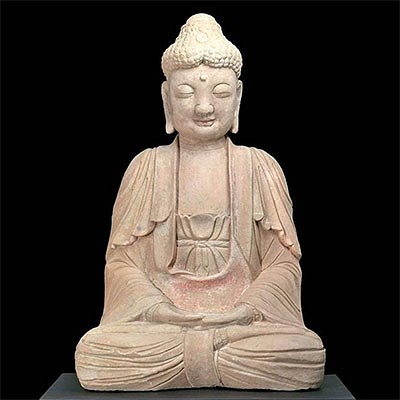Impressive Indus Valley Pottery Vessel Pig Form, TL'd
Lot 69b
About Seller
Artemis Fine Arts
686 S Taylor Ave, Ste 106
Louisville, CO 80027
United States
Selling antiquities, ancient and ethnographic art online since 1993, Artemis Gallery specializes in Classical Antiquities (Egyptian, Greek, Roman, Near Eastern), Asian, Pre-Columbian, African / Tribal / Oceanographic art. Our extensive inventory includes pottery, stone, metal, wood, glass and textil...Read more
Categories
Estimate:
$4,000 - $6,000
Absentee vs Live bid
Two ways to bid:
- Leave a max absentee bid and the platform will bid on your behalf up to your maximum bid during the live auction.
- Bid live during the auction and your bids will be submitted real-time to the auctioneer.
Bid Increments
| Price | Bid Increment |
|---|---|
| $0 | $25 |
| $300 | $50 |
| $1,000 | $100 |
| $2,000 | $250 |
| $5,000 | $500 |
| $10,000 | $1,000 |
| $20,000 | $2,500 |
| $50,000 | $5,000 |
| $100,000 | $10,000 |
| $200,000 | $20,000 |
About Auction
By Artemis Fine Arts
Feb 18, 2021
Set Reminder
2021-02-18 10:00:00
2021-02-18 10:00:00
America/New_York
Bidsquare
Bidsquare : Exceptional Antiquities, Asian, Ethnographic
https://www.bidsquare.com/auctions/artemis-gallery/exceptional-antiquities-asian-ethnographic-6373
Museum-worthy examples of Egyptian, Greek, Roman, Etruscan, Near Eastern, Far East / Asian, Pre-Columbian, African / Tribal, Oceanic, Native American, Spanish Colonial, Russian, Fossils, Ancient Jewelry, Fine Art, so much more! Artemis Fine Arts info@artemisfinearts.com
Museum-worthy examples of Egyptian, Greek, Roman, Etruscan, Near Eastern, Far East / Asian, Pre-Columbian, African / Tribal, Oceanic, Native American, Spanish Colonial, Russian, Fossils, Ancient Jewelry, Fine Art, so much more! Artemis Fine Arts info@artemisfinearts.com
- Lot Description
Central Asia, Indus Valley, 2800 to 2600 BCE. An intriguing example of a hand-built pottery vessel in the form of a portly swine with a rotund, generally cylindrical body that is supported by four relatively flat feet, sports a petite stubby tail on its hind quarters, and has a circular spout centered atop the back. The pig's head emerges from the front, presenting a visage with incised eyes, ears (with losses), a prominent snout, and a broad nose with two impressed nostrils. Size: 12" L x 7.375" W x 8.3" H (30.5 cm x 18.7 cm x 21.1 cm)
The Indus Civilization is sadly understudied with a writing system that remains undeciphered as well as an intriguing paradox in that while it created monumental architecture, it created no monumental art. How perplexing! In a civilization that dominated such a vast area, isn't it strange that archaeologists have not found evidence of either monumental art or architectural monuments inscribed with the names of their leaders. Instead, emphasis is placed upon relatively small works of elegance like this example.
This piece has been tested using thermoluminescence (TL) analysis and has been found to be ancient and/or of the period stated. A full report will accompany purchase.
Provenance: private California, USA collection, by descent, moved from Germany in 1997, originally collected in the 1970s in Hamburg, Germany
All items legal to buy/sell under U.S. Statute covering cultural patrimony Code 2600, CHAPTER 14, and are guaranteed to be as described or your money back.
A Certificate of Authenticity will accompany all winning bids.
We ship worldwide and handle all shipping in-house for your convenience.
#155960TL holes on bottom and neck. Losses to one ear and areas of spout as shown. Abrasions and chipping to feet, body, tail, head, and pigment, with light staining to some areas of pigment, and light encrustations. Nice earthen deposits and light remains of original pigment throughout.Condition
- Shipping Info
-
All shipping is handled in-house for your convenience. Your invoice from Artemis Gallery will include shipping calculation instructions. If in doubt, please inquire BEFORE bidding for estimated shipping costs for individual items.
-
- Buyer's Premium



 EUR
EUR CAD
CAD AUD
AUD GBP
GBP MXN
MXN HKD
HKD CNY
CNY MYR
MYR SEK
SEK SGD
SGD CHF
CHF THB
THB
















